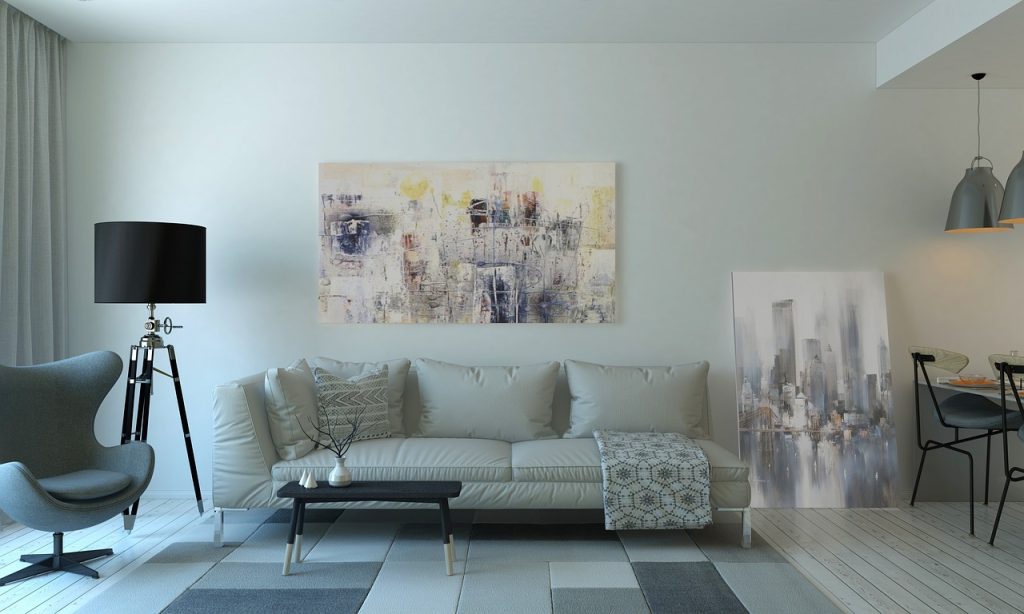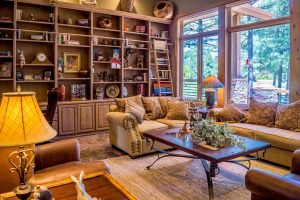Minimalism or Maximalism in Interior Design

If you have ever been on an interior design blog or online group, you have probably encountered the infamous debate on whether minimalism or maximalism should prevail in interior design trends.
Proponents of minimalism argue it’s more sustainable and also fashionable, while proponents of maximalism claim that minimalism has been dominating the trends for far too long and that it’s too boring and impersonal.
As with everything, the truth is probably somewhere in the middle. We have not come here to defend one or the other, but we do intend to destroy some tropes about both styles and to also show you what each one entails, and how you can achieve it in your own home.
Definition
Minimalism in interior design can be defined as design which is stripped down to its core function, favouring simple shapes and featuring furniture and décor with natural materials and usually muted colours. Motto: ‘Less is more.’
Maximalism, on the other hand, is a design that is characterised by abundance; an abundance of materials, patterns, colours. There are generally more pieces of furniture and other items in a maximalist room. Motto: ‘More is more.’
History
Let us briefly discuss the history of both trends which might also explain why some people prefer one style over the other.
Minimalism as a movement in interior design could be said to have originated in the late 40’s to early 50’s or the post-war era in the west. Modernist furniture took over the post-war home as functionality and so-called “cleanness” was favoured. Modernist minimalist furniture also reflected the new technological advancements and symbolised an optimistic outlook into the future.
Maximalism could be said to have always existed in one shape or the other. Maximalist design can be seen in royal palaces and noble houses, with the Baroque style being the very extreme version. Maximalism, however, took a bow in the post-war years, but not for long.
The style came back with a bang in the 1980’s which were all about excess. Bold colours and patterns dominated this decade of decadence, only to come crashing down again. Still, maximalism returned yet again in another shape as a rebellion against the beige horror that minimalism evolved in or as a way to show one’s individuality.
You can see that the question of minimalism vs maximalism is not only tied to which designs one prefers but also to manners of expression based on one’s view of themselves and the world at large.
Key Concepts
Let us now move on to the characteristics that define each interior design style which might help you choose between the two.
Minimalism:
- The less, the better – Minimalism believes that you don’t need unnecessary clutter which can distract. Keep everything to the bare minimum (almost) to be able to destress after a long day at work.
- Open spaces – Minimalism favours open spaces for the same reason it dislikes clutter – it believes that an open floor plan is more relaxing.
- Light – Minimalists are all about brightness, achieved through big windows and bright lights.
- Functionality – You should try to think about an item’s functionality before you buy it and favour functional furniture and décor over beautiful and unnecessary items. This doesn’t mean that you shouldn’t display pretty pictures or statues, but it means you shouldn’t clutter your home with them.
- Subdued tones – Earth colours are usually preferred in minimalism nowadays, but the minimalism of old often featured bold splashes of colour (e.g., the primary colours mixed in with black and white), so you can still experiment; you don’t have to go to Kim K’s lengths.
- Harmony – Everything, everywhere, should be there for a reason, for a good reason, we might add. The furniture, along with its placement and colours, should be in a symbiotic relationship.
- Natural materials – Most often than not, minimalist design favours natural materials such as wood and leather.
- Geometric shapes – Minimalism is all about clean lines and curves and simple shapes, none of those intricate details.
Maximalism:
- Comfort – First and foremost, maximalism is about comfort in your home. This can be expressed in two ways – comfortable furniture and personal things; surround yourself with items that hold sentimental value to you. This might the opposite of the minimalist’s maxima of decluttering but it serves the same purpose – relaxation.
- Bold colours – Don’t be afraid to experiment with bold and dark or bright colours if that makes you happy. Still, make sure that the colours you use “make sense” for the room/s.
- Textures and Patterns – Mix different textures and patterns to find your personal style. Again though, ensure that these textures and patterns can “co-exist peacefully” so as not to create a very chaotic design.
- Periods galore – You don’t have to choose between modernist or antique furniture and items when you can have both.
- Unique items – Maximalist design often relies on “discussion pieces” or unique items that your guests would ask you about. Maximalism is generally about uniqueness, so having one-of-a-kind items, or otherwise rare finds, display them proudly.
- Complex shapes and design – The polar opposite of the minimalist subdued geometric shapes.
- Please yourself – Most importantly, you should feel happy in your own home. There are no set rules on how to make your home the right type of maximalist, so in the end, you’re the boss.

